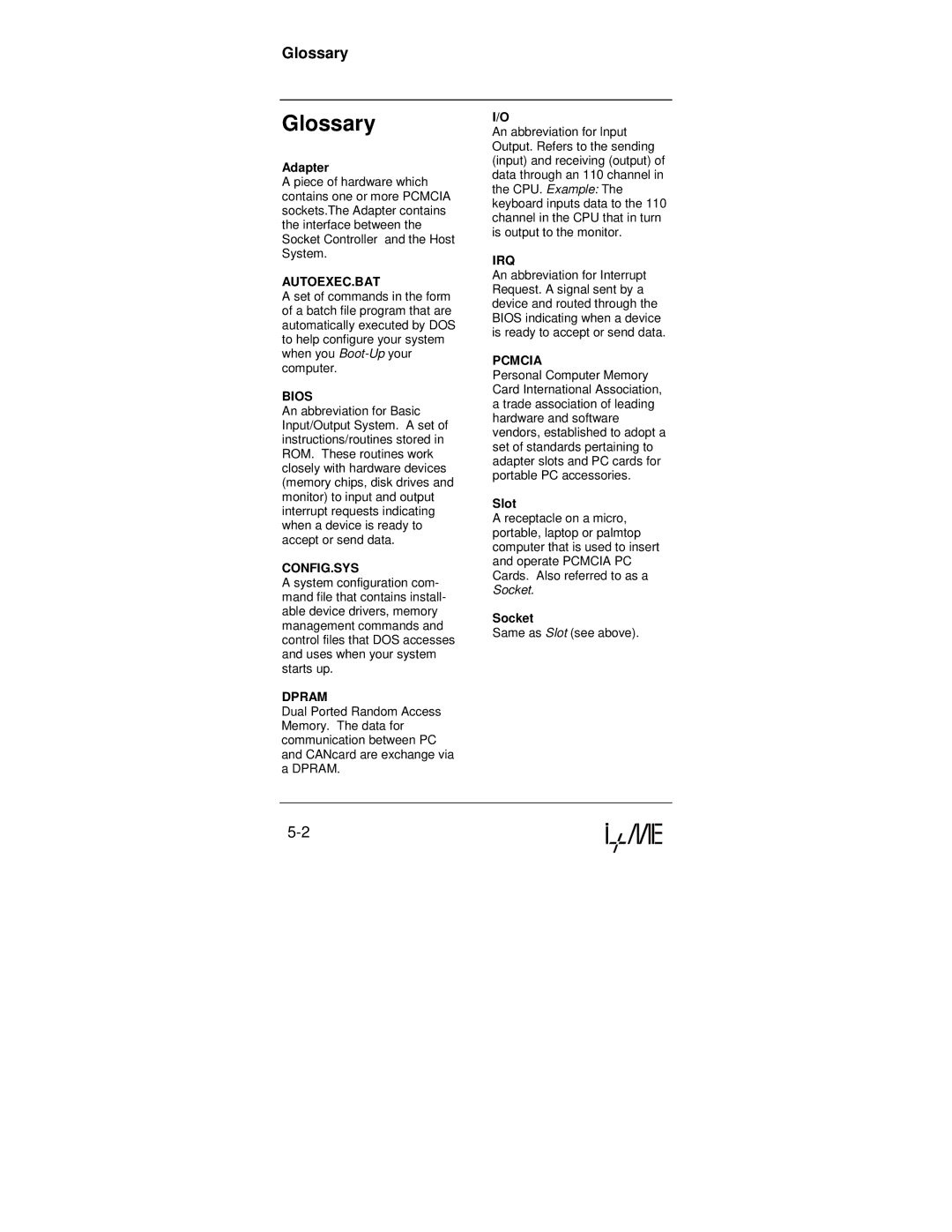
Glossary
Glossary
Adapter
A piece of hardware which contains one or more PCMCIA sockets.The Adapter contains the interface between the Socket Controller and the Host System.
AUTOEXEC.BAT
A set of commands in the form of a batch file program that are automatically executed by DOS to help configure your system when you
BIOS
An abbreviation for Basic Input/Output System. A set of instructions/routines stored in ROM. These routines work closely with hardware devices (memory chips, disk drives and monitor) to input and output interrupt requests indicating when a device is ready to accept or send data.
CONFIG.SYS
Asystem configuration com- mand file that contains install- able device drivers, memory management commands and control files that DOS accesses and uses when your system starts up.
DPRAM
Dual Ported Random Access Memory. The data for communication between PC and CANcard are exchange via a DPRAM.
I/O
An abbreviation for lnput Output. Refers to the sending (input) and receiving (output) of data through an 110 channel in the CPU. Example: The keyboard inputs data to the 110 channel in the CPU that in turn is output to the monitor.
IRQ
An abbreviation for Interrupt Request. A signal sent by a device and routed through the BIOS indicating when a device is ready to accept or send data.
PCMCIA
Personal Computer Memory Card International Association, a trade association of leading hardware and software vendors, established to adopt a set of standards pertaining to adapter slots and PC cards for portable PC accessories.
Slot
A receptacle on a micro, portable, laptop or palmtop computer that is used to insert and operate PCMCIA PC Cards. Also referred to as a Socket.
Socket
Same as Slot (see above).
